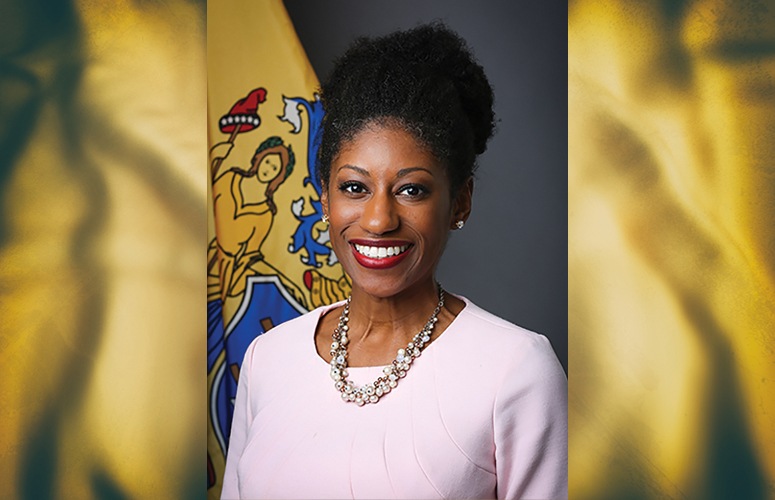
Will the End of Affirmative Action Impact Higher Ed DEI Efforts?
Experts at New Jersey’s colleges and universities say, “No!”
By Shameyka McCalman, Contributing Writer On Apr 2, 2024Last year, the U.S. Supreme Court ruled that colleges and universities could not use race-conscious affirmative action programs and policies in their admissions processes. With that, higher education administrators in the Garden State say recruiting and supporting a diverse and inclusive student body has and will be a priority.
While the controversial 6-3 ruling will go into effect later this year, higher education experts in New Jersey say their more holistic approaches to the college admissions process have always considered diversity and inclusion and will continue to do so since Affirmative Action was struck down.
Implementing Marketing Strategies
Schools like Ramapo College are actively and strategically recruiting in countless New Jersey communities. Christopher Romano, vice president of strategic enrollment, outreach, and engagement at Ramapo, details the institution’s marketing efforts, which include administration staff visiting and speaking with a wide range of high school students, partnering with multiple guidance counselors across the state, hosting several underrepresented districts, busing students to and from the university, and marketing campaigns in significant commuter hubs.
“Recruitment efforts must remain grounded in ensuring that the entire state of New Jersey is being served. Marketing efforts need to ensure that [the college] is marketing in areas and venues that serve many students. [It is] essential to make sure that recruitment never changes,” Romano says.
Meanwhile, William Paterson University has successfully enrolled and retained an ethnically diverse student body without any specific marketing strategies since the university has naturally attracted a large fraction of Hispanic and minority communities in New Jersey.
If fact, the institution is the third most diverse public university in New Jersey. It is also designated as a Hispanic-Serving institution with 30% of students claiming Hispanic heritage, and a Minority-Serving Institution with 59% students of color.
University President Richard J. Helldobler feels that the end of affirmative action will affect more elite institutions, not state colleges like William Paterson University, which accepted 1,711 Black and 2,857 Hispanic students in fall 2023 — 48% of its overall student body.
“It doesn’t impact our admissions process and won’t for most institutions like William Paterson University,” Helldobler says. “It will impact the elite and Ivy League institutions that are seeking to diversify their enrollment for the general public.”
With a slightly different take on recruitment than the other two colleges, Seton Hall University’s Derek D. Martinez, assistant vice president, marketing and communications, enrollment services, notes that the university recruits talent from across the country, leading to a third of federal Pell Grant recipients making up student enrollment.
“[We] don’t set specific goals to target students with financial need. All [we] can do is support the traditionally underrepresented students once they arrive on campus,” Martinez explains.
Support Throughout the College Experience
Similar to Seton Hall’s Martinez, Rutgers Law School’s Senior Associate Dean for Admission Matthew Saleh, who started in his position nearly one year ago, understands that championing diversity and inclusion doesn’t begin and end when students enroll in school. The social support continues throughout their educational experiences.
Saleh explains that the university has dedicated time to cultivating more events and organizations that spotlight prominent affinity groups across campus locations. This includes the Asian Pacific American Law Students Association, Black Law Students Association, Association of American Law Students, and other campus virtual programs it coordinates. “These programs and groups are here to support [minority groups] throughout their time as law students and their lifetime as alumni,” Saleh says.
After implementing programs aimed towards supporting students, William Paterson University increased its one-year retention rate for first-year students who began college in fall 2018 compared with fall 2022 from 69.3% to 72.7%. Retention rates were notably high for Black, Hispanic, and Asian students — 60.6%, 70.4% and 86.3%, respectively.
By focusing on the school’s overall retention rates, the university educates students who are changing the social fabric of the country. “[Our students are] predominantly students of color and low [income],” Helldobler says. For these students, “the bachelor’s degree is still America’s greatest income equalizer. Every bachelor’s degree we award creates greater social and economic mobility for our students, their families, and their communities.”
At Ramapo College, undergraduate first-year students receive support as soon as they step onto campus. First-year students are assigned an academic adviser and career advisor as they attend classes. They assist them with the internship process and experiential learning opportunities.
School Demographics Reflect NJ’s Diverse Population
Some higher education specialists accredit New Jersey’s diverse student body to the tri-state region’s demographics: According to the U.S. Census Bureau, slightly more than half of New Jersey’s population (52.9%) was white, not Hispanic or Latino, in July 2023. So, the state’s colleges and universities are becoming as diverse as New Jersey itself. For example, at Rutgers Law School, 41% of enrolled students were students of color, and 59% of the class identified as female – the most diverse class in the university’s history.
Saleh says the university achieved this monumental milestone partly because of its location. “The university has campus locations in Newark and Camden, which are sort of anchor institutions heavily immersed in their respective communities. As the State University of New Jersey, Rutgers has to be deeply committed, not only to be for our area, but of our area in terms of where its students are coming from,” he says.
Other DEI Efforts
Ramapo’s Romano ensures that the institution reviews each student’s application in totality. The college also tracks the enrollment increase in first-generation students, and the first in their families to attend college. In its most recent class, 47% of students pursuing a college degree were the first in their family to do so – the second largest class in Ramapo’s history.
While the U.S. Supreme Court ruling does suppress the applicant’s race and ethnicity from reviewers, Rutgers Law’s Saleh says that information can still be revealed by students writing about their experiences or cultural upbringing in their essays, personal statements, or optional essays.
“Rutgers Law School has never had, nor will have, a plus-minus system that provides points or a more or less favorable review based on one’s identity. Rather, we highly value certain characteristics within one’s background, whether that’s adversities or challenges,” he says.
In addition to carefully reviewing students’ written materials, the university made changes to its scholarship policy, providing better scholarship opportunities to out-of-state and in-state residents.
“One of the great things about Rutgers Law School is that it is considerably less expensive than most institutions across the country, but especially in the tri-state region. In-state tuition is about $40,000 less than most schools in New York City and about $25,000 less than for out-of-state students. That is one of the things – especially when you look at students from lower income backgrounds who are disproportionately from communities of color – that makes Rutgers an attractive offer,” Saleh explains. “It’s not just from its academic prowess, but from the financial affordability to attend.”
Conclusion
Because the U.S. Supreme Court ruling takes effect at the end of June, its impact may be seen in the incoming fall class or in later years.
“We haven’t been through an admission cycle,” Ramapo’s Romano says. “The ruling was last summer. No university has gone through an admissions process yet. I think it’ll be hard to know the overall effect of the decision on higher education. I’m confident that [Ramapo] will continue to do what it has always done in enrolling a class that reflects the state of New Jersey.”
To access more business news, visit NJB News Now.
Related Articles:





